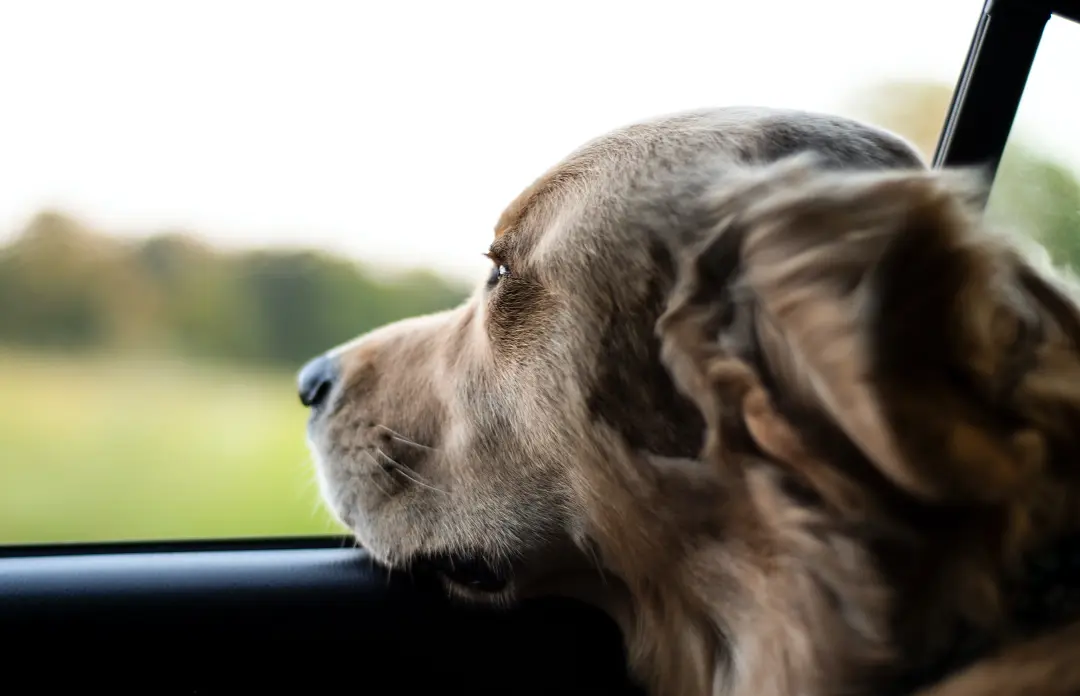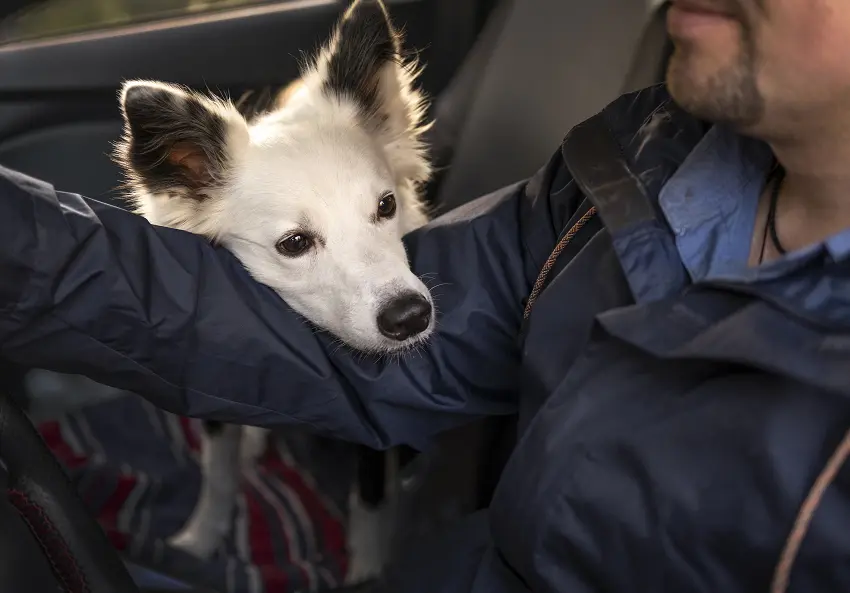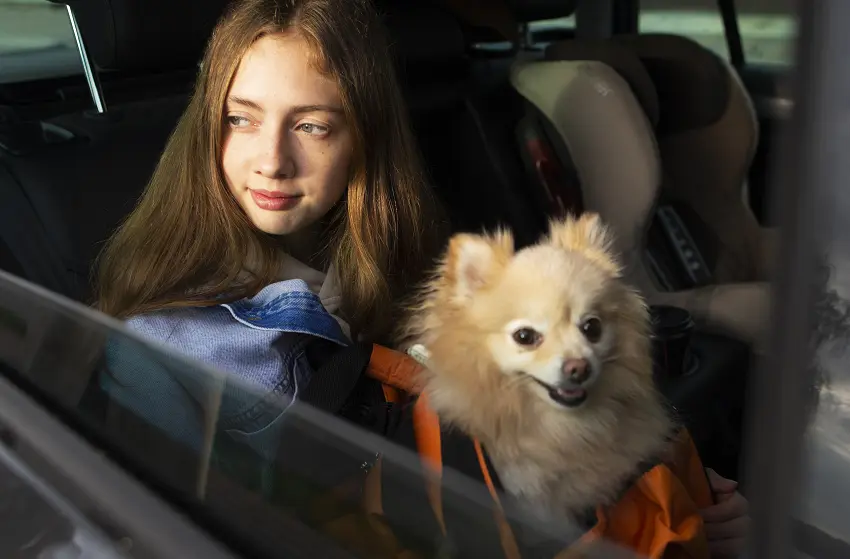6 Ways On How To Help Dogs With Car Sickness
So you’re cruising on the freeway when your dog suddenly drools, cries, and the biscuit you gave reappeared on a vomited mess. What are you going to do? Well, car sickness or motion sickness also happens to dogs.
This is prevalent in canines who are not used to riding moving vehicles. The good thing is that there are ways how to help dogs with car sickness.

You can also help your dog adjust to the new environment so it will enjoy your future road trips.
Why does my dog get car sick?

It’s all a matter of physics. Just like humans, car sickness in dogs is linked to the sense of equilibrium and balance. Some dogs can get on car rides without any problem. However, some will appear sick due to motion sickness.
This is commonly observed in puppies, but older dogs can also experience it on their first car ride.
So why is this happening? For young dogs, their ear structure is yet to be fully developed, which may lead to dizziness if they are placed inside a moving vehicle.
Also, travel anxiety can happen to dogs, which can lead to car sickness-related symptoms.
For most dogs, the first few car rides are enough for them to adjust. However, an adult dog can still find it hard to outgrow the problem.
It’s important to identify the signs of dog motion sickness to give your dog the help it needs.
Constant yawning, licking lips, drooling, whining, and vomiting are just some of the classic symptoms of dog car sickness.
How To Help Dogs With Car Sickness? 6 Different Ways

Car sickness is fairly easy to deal with as long as you have the right aids for your dog. The following are some of the effective options you can try.
1. Crate training
The first thing you should do is crate train your dog. The crate will become your canine’s safe haven while in your car.
This may take a few weeks, but it will benefit your dog a lot. Besides, crate training is an integral part of potty training among dogs.
Once your dog is used to staying in a crate, you can start taking it on short rides.
Start with slow and brief trips around the neighborhood. If you see your dog showing signs of motion sickness, stop and let it relax before driving back home.
2. Bucket seat
Another helpful tool is a bucket dog seat. This works like a fortress for your dog where it can sleep and burrow during a long car ride.
Make sure that the dog’s booster seat has raised edges to give it a sense of protection.
Many bucket seats for dogs are compatible with a car’s seat belt system. This makes it very easy to put on and off the vehicle.
You can also use a safety harness for anxious dogs.
3. Your T-shirt
One thing that really worked for my dog Sherlock is my used shirts. He finds my scent comforting, so we see to it that he’s bringing one during our car rides.
You can also place this in your dog’s car seat or inside the crate.
Having your scent close to them relieves dogs’ stress. It can also help reduce motion sickness, but it’s not a guaranteed solution for all canines.
4. Artificial pheromone
If the T-shirt trick isn’t working, one thing you can try is artificial pheromone. This mimics the scent mother dogs release when grooming and caring for their litter.
This will calm your pup and help it go through a long ride without suffering from motion sickness.
You can find an artificial pheromone diffuser that you can plug into your car.
It’s odorless for humans, but your dog can pick up the scent. For a simpler option, you can look for pheromone sprays.
5. Sedatives
If you have a nervous older dog that gets car sick on every single ride, sedatives are the best option.
This will calm your dog so that it will sleep through the entire car trip. You can ask your dog’s vet for the best option as well as the right dose that suits your pet.
For long car travel, veterinarians can prescribe sedatives like Buspirone, Benadryl, Alprazolam, Clomipramine, and so on.
Each one of these sedatives has different dosages and applications. Avoid giving it to your dog without consulting the vet first.
6. CBD oil
If you want a natural remedy to help your car-sick dog, you can consider the use of CBD oil and CBD products. These are rich in cannabinoids, which provide a calming and relaxing effect.
It doesn’t make your dog high, which is what THC is known for.
CBD oil is known to help dogs suffering from anxiety, depression, and chronic pain. Please read here: Can CBD Oil Help Dog Ear Infections
A small dosage is enough to help your dog calm down. Aside from that, CBD oil is proven to help reduce nausea, which is very common among car sick dogs.
Before you give your dog any CBD products, make sure that you talk to the vet first. This is especially true if your pet has a lingering illness or is taking medications.
How do I train my dog to like the car?
Not all dogs will love car rides right away, but you can make them like it later on. Make sure that the dog has a comfy and safe spot inside the vehicle while surrounded by its toys.
You should also take it slow at first, so your dog won’t experience severe motion sickness.
Also, keep talking to your dog in a calm voice as reassurance that everything is okay. You should also keep the first trips short to build your dog’s tolerance.
Over time, your dog will adjust to the new stimuli of riding moving cars. Just be patient, as some dogs may take longer to adjust. Nevertheless, a few weeks should be enough for most canines.
Can I give my dog human travel sickness tablets?
A few dog owners swear by human-grade travel sickness tablets for dogs’ car sickness. Pils like Benadryl and Dramamine are widely used to appease a dog’s motion sickness.
However, you should mind the dosage. For Benadryl, the rule of thumb is 1 mg for every pound of body weight.
If you’re planning to give human motion sickness medication to your dog, I suggest that you phone the vet briefly. This way, you can confirm whether there are reported side effects to the drug.
If so, the vet can offer an alternative option.
How do you travel with a puppy in a car?

When traveling with younger dogs, it’s important to prepare before the actual trip. Train your dog and start taking it on short rides.
This way, you can assess if the doggo will have motion sickness and how you can fix it.
It’s also important to conduct a health check with the vet. This will let you know if your dog has health issues that may contribute to motion sickness.
Aside from that, make sure that you bring the essentials like dog food, calming treats, leash, toys, collar, harness, and so on.
You should bring dog diapers for long road trips.
Above all, never leave your puppy unattended inside the car and never let the dog ride in the back of an open truck.
Can puppies go on long car rides?
Puppies can travel by car, but you should consider starting with short trips first. This will help a scared pup adjust to its new adventure.
Nevertheless, you’re lucky if your little dog gets in and out of the car without a care in the world.
If you’re planning to transport your dog during a long car trip, make sure that you prepare.
Bring the essentials and have someone watch over your dog while you drive. It’s also best to sedate the puppy for very long trips.
Conclusion
Knowing how to help dogs with car sickness is easy with a few life hacks. Carrying a safety harness, withholding food at least 12 hours before travel, keeping the car quiet, and offering special trip toys are a few of them.
You should also consult the vet for sedatives that you can give your dog if it’s not dealing with road trips well.
Aside from that, you should train your dog by starting with short and slow trips.
Thank you for reading and enjoy your journey with your doggo!
